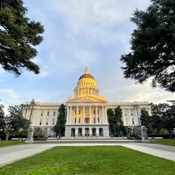
Vending Machine Food Sales (Publication 118)
We designed this publication to help you properly apply and pay sales tax for food sales you make through vending machines, which is generally understood to be a physical "machine" which dispenses items that it holds or makes upon deposit of cash, coins, credit, or other consideration into a slot. An item that can be accessed by a customer prior to payment, or that is not physically dispensed from the machine immediately after payment, is not considered to be sold through a vending machine.
Vending machine operators generally need seller’s permits
You generally need a seller’s permit if you make sales through a vending machine. You need only one permit, regardless of how many machines you operate (the operator of the vending machine is the person who stocks the machine and collects money from it).
There are some exceptions. If you sell food through a vending machine for a price of 15 cents or less per item, you do not need a seller’s permit. Certain groups do not need a seller’s permit because their vending machine sales are not taxable. For example, parent-teacher associations or equivalent school or library support groups do not need a seller's permit for vending machine sales (see publication 18, Nonprofit Organizations).
You can register for a seller's permit on our website at www.cdtfa.ca.gov by selecting Register, and then select Register a New Business Activity. You can also register in person at any of our field offices. For assistance you may contact our Customer Service Center at 1‑800‑400‑7115 (TTY:711). Customer service representatives are available to assist you Monday through Friday from 7:30 a.m. to 5:00 p.m. (Pacific time), except state holidays.
Please note: This publication summarizes the law and applicable regulations in effect when the publication was written as noted above. However, changes in the law or in regulations may have occurred since that time. If there is a conflict between the text in this publication and the law, decisions will be based on the law and not on this publication.
Revision June 2023

